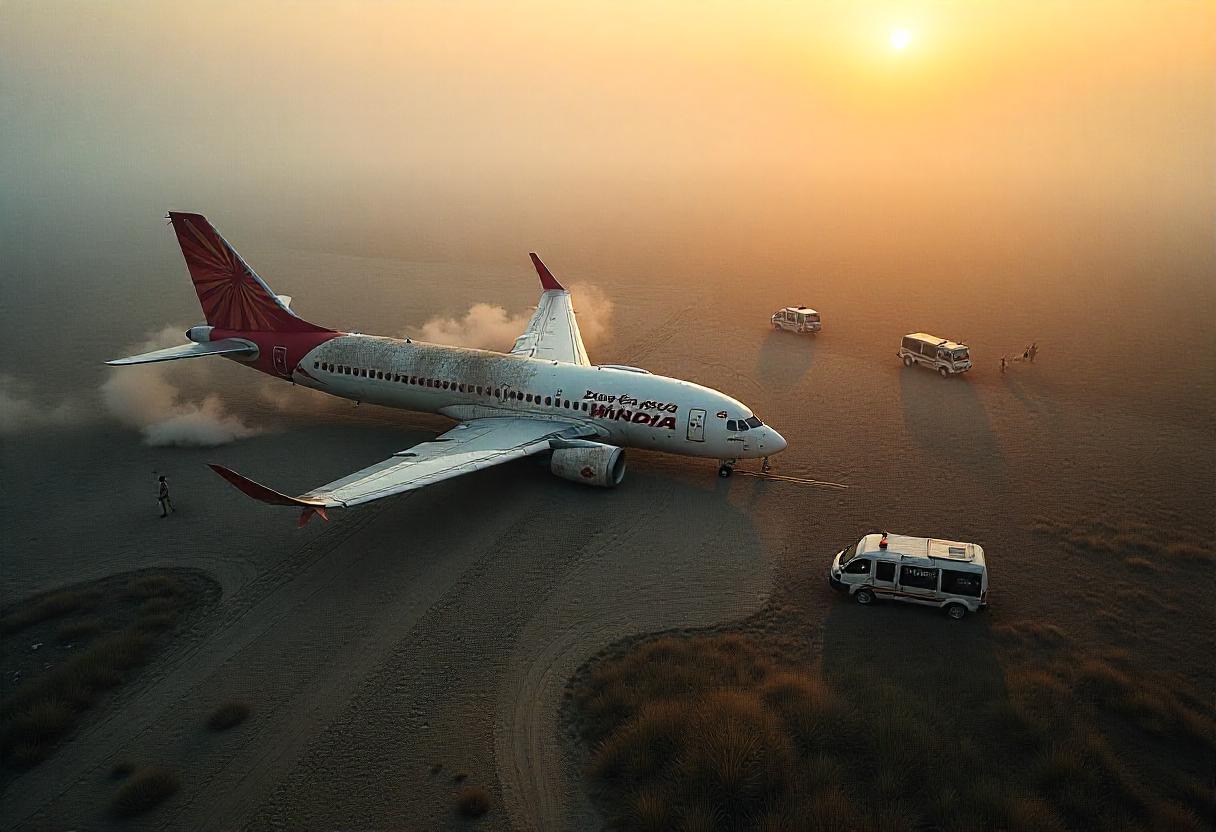Simulator Tests Post-Crash
In the wake of the tragic Air India Dreamliner crash in Ahmedabad, a series of simulator tests were conducted by experienced pilots to investigate the possible causes behind this devastating incident. These tests recreated specific challenging scenarios that the aircraft might have faced during its final moments. This simulation included a variety of adverse conditions: heightened weight, elevated temperatures, extended landing gear, and retracted wing flaps—all essential factors contributing to the crash.
The Simulator Findings
A team of senior Air India pilots utilized simulators to mimic these severe conditions. They sought to understand whether the Boeing 787-8 could maintain flight under such circumstances. Remarkably, results suggested that the aircraft could indeed keep flying despite losing critical lift due to wing configuration adjustments. This outcome provides valuable insights into the ongoing investigation concerning the Air India flight AI 171.
Independent Testing Conducted
The tests took place independently at Air India’s training facility in Mumbai, promptly following the June 12 incident. These simulations were executed during regular training sessions by the airline’s dedicated fleet trainers of the Boeing 787 aircraft. When approached for comments, Air India clarified that these were self-initiated tests by the pilots, affirming that the airline itself did not supervise these exercises.
Context of the Investigation
In the aftermath of the accident, which tragically claimed over 260 lives, multiple theories surfaced about the potential causes, including the possibility of operating the aircraft with retracted flaps and landing gear down. The simulator trials aimed to explore this theory further, revealing that under simulated weight and temperature stresses, the aircraft’s ability to fly remained intact, albeit with challenging parameters.
Understanding Aircraft Dynamics
Understanding the functions of flaps is crucial here, as they are adjustable surfaces located on the wings that enhance lift during critical flight phases such as takeoff and landing. They are typically extended for these operations and retracted during cruising. This dynamic interaction plays a vital role in maintaining aircraft stability and performance.
Broader Implications for Aviation Safety
Following the Ahmedabad accident, India’s Aircraft Accident Investigation Bureau (AAIB) initiated a comprehensive probe, assembling a multidisciplinary team consisting of experts including representatives from the US National Transportation Safety Board (NTSB). Currently, the investigation is delving into data extracted from black boxes, focusing on the cockpit voice recorder and flight data recorder to reconstruct the flight’s final moments. This information is essential for drawing conclusions on aircraft performance and piloting decisions at critical junctures.
Comprehensive Analysis Underway
The ongoing analysis aims to uncover the events leading up to the accident to improve future aviation safety standards. With advancements in simulator technology and data analytics, airlines are increasingly emphasizing training to include not just routine operations but also emergency handling based on real incidents.
Conclusion: Understanding the Past to Shape the Future
The tragic crash in Ahmedabad serves as a stark reminder of the complexities involved in air travel and the critical need for rigorous training to handle emergencies. While the simulator tests indicated that the Boeing 787-8 maintained some flying capabilities under adverse conditions, real-life experiences demonstrate that no simulation can fully encapsulate the myriad factors at play during a crisis. Real-world experiences and extensive training can significantly enhance pilots’ preparedness and ultimately improve passenger safety.
What cannot be overlooked is how these findings and the ongoing investigations could influence tourism and travel in the years ahead. As aviation safety evolves and becomes more robust, it undoubtedly brings improved confidence to travelers considering air travel in various destinations. When planning your next getaway or exciting adventure, consider using services that prioritize safety and reliability, such as those offered by GetExperience.com.
In summary, the insights derived from pilot simulations following the Air India crash underscore the indispensable role of comprehensive flight training and aircraft safety protocols. While reviews and feedback are helpful, personal experiences remain invaluable. Through platforms like GetExperience, travelers can secure experiences from verified providers at competitive prices, ensuring informed decisions free from unwarranted expenses or disappointments. Enjoy the convenience, affordability, and comprehensive selection that make your next journey unforgettable. Book your Trip now at GetExperience.com.

